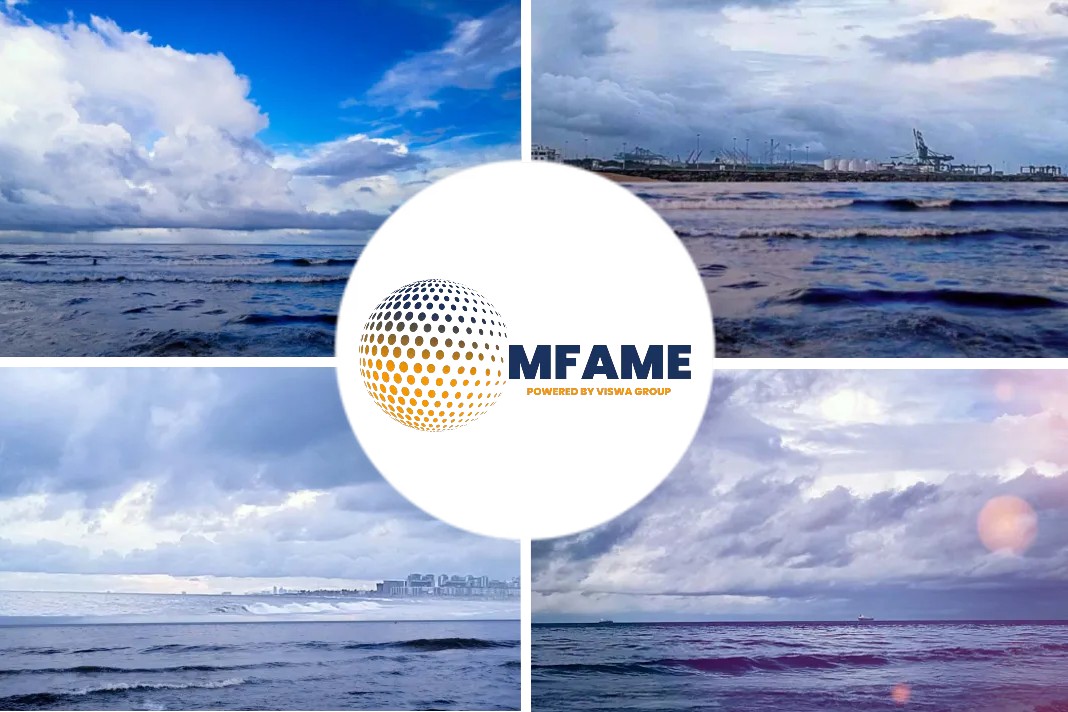According to maritime technology supplier Green Framework, the onboard desulphurisation could provide an alternative to low-sulphur fuel, scrubber installations or LNG for compliance with the IMO’s global sulphur cap from 2020.
Desulphurisation process:
The desulphurisation process has its roots originating in the oil industry. De-Sul an installation developed an installation that has claimed to remove the sulphur from HFO. This installation has been designed by a New York based company which has announced that the Sulphur content of 3.5% in HFO 380 would be reduced to 0.1% or less after treatment.
- De-Sul claims to remove sulphur from the fuel before it enters the engine unlike a scrubber which just filters out the SOx from the exhaust gas
- The De-Sul installation is roughly the size of a 20ft container, though slightly taller, and is installed between the main fuel tank and the day tank aboard ocean going vessels above 400gt.
- De-Sul gets sulphur out of HFO through a pre-treatment that makes the sulphur molecules stick to the thicker and heavier particles in HFO, which are then filtered out. The sludge has to be collected in a separate tank
- Out of every 33 tons of HFO used, one ton of sludge will be separated. At bunker stations, the sludge has to be pumped out. This sulphur waste could then be used for creating purified sulphur for fertilisers and other applications
Prototype ready:
The De-Sul prototype has been developed, however the installation has not yet been tested aboard the ship on a day to day basis.
The expectations put forth by Green Framework are based on earlier trials conducted at the test facility in Russia.
The oil, containing an even higher sulphur level then HFO, was effectively purified down to a sulphur level of 0.1%.
Barbara Weingarten, CEO of Green Framework said, “The IMO would consider De-Sul as an authorised device to reduce sulphur emissions below the 0.5% global cap and even the 0.1% fuel sulphur limit in emission control areas. This is likely to happen only after several hundred De-Sul installations have been proven successful aboard ships, she noted. Until then, both day tank fuel samples and continuous exhaust gas monitoring will have to be applied by the ship’s crew in order to prove compliance with IMO exhaust regulations”.
Weingarten further added, “Scrubbers easily cost over a million dollar and will take weeks to install. De-Sul will cost only a fraction, can be installed in two days and takes a lot less space aboard and adds less weight. With De-Sul, the cheaper HFO can be bunkered. First calculations show that the earn-back time for De-Sul can be as short as three to four months, for a vessel that typically sails 300 days a year with a 40–50 tonne fuel consumption every 24 hours”.
Customers to be benefitted:
The molecular pre-treatment and filtering of sulphur from HFO varies from the method used at oil refineries to remove sulphur out of the fuel oil. It heavily relies on the chemical process called ‘Hydro-cracking’ which involves heavy machinery and copious amounts of fresh water which also ultimately leads to pollution.
However, De-Sul will be immensely helpful to the ship owners, as no alternative fuels are required. It only requires an infrastructure for collection and reusing the sulphur sludge emitted during the process.
Did you subscribe for our daily newsletter?
It’s Free! Click here to Subscribe!
Source: The Motorship















![[Watch] Crazy Power Needed to Move World’s Largest Containerships](https://mfame.guru/wp-content/uploads/2023/11/mfame-tanker-100x70.jpg)


Glad to known about your desulphurisation unit. Our company Frank trade is registard in Bangladesh.We can plan if we get more details of your desulphurisation unit.